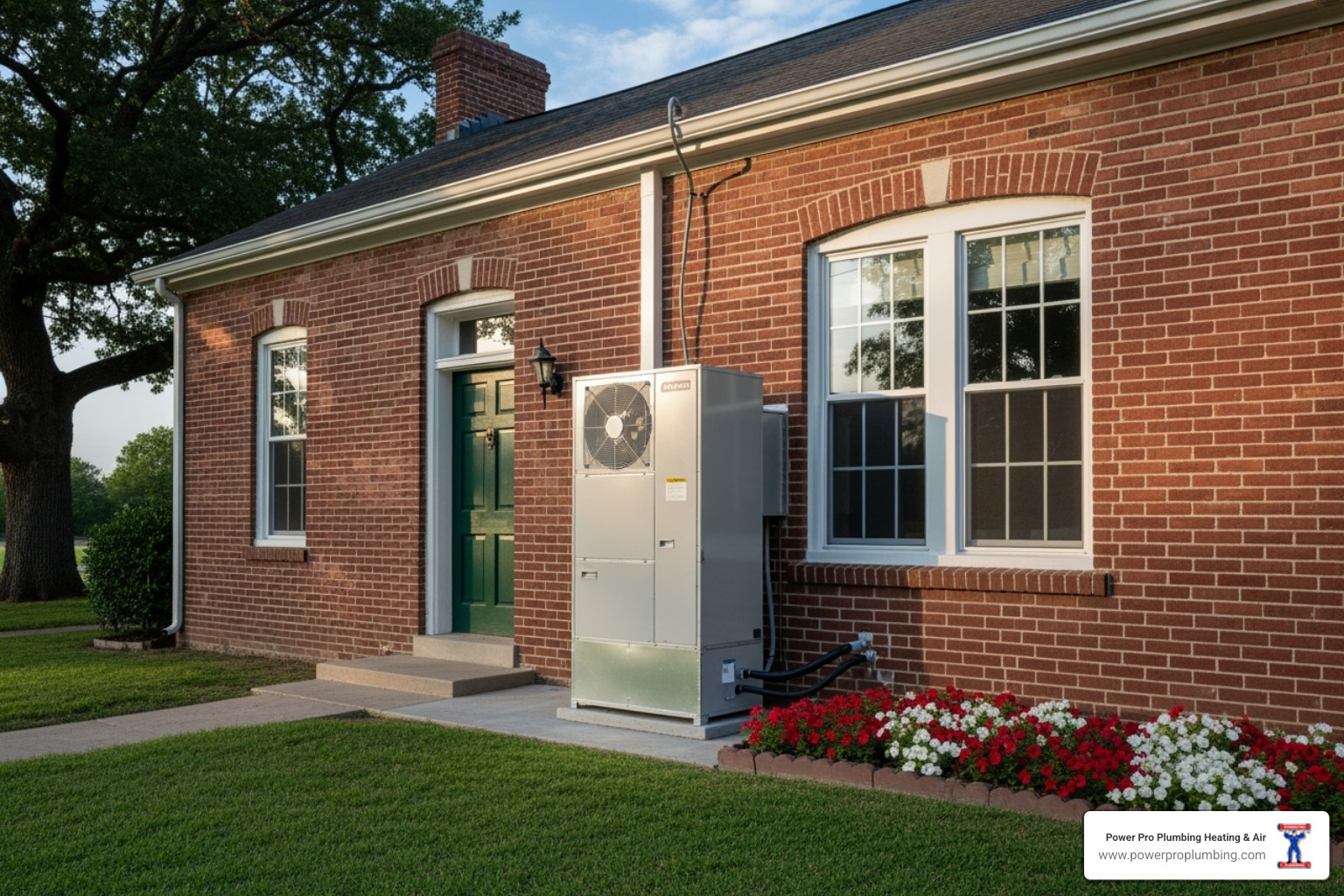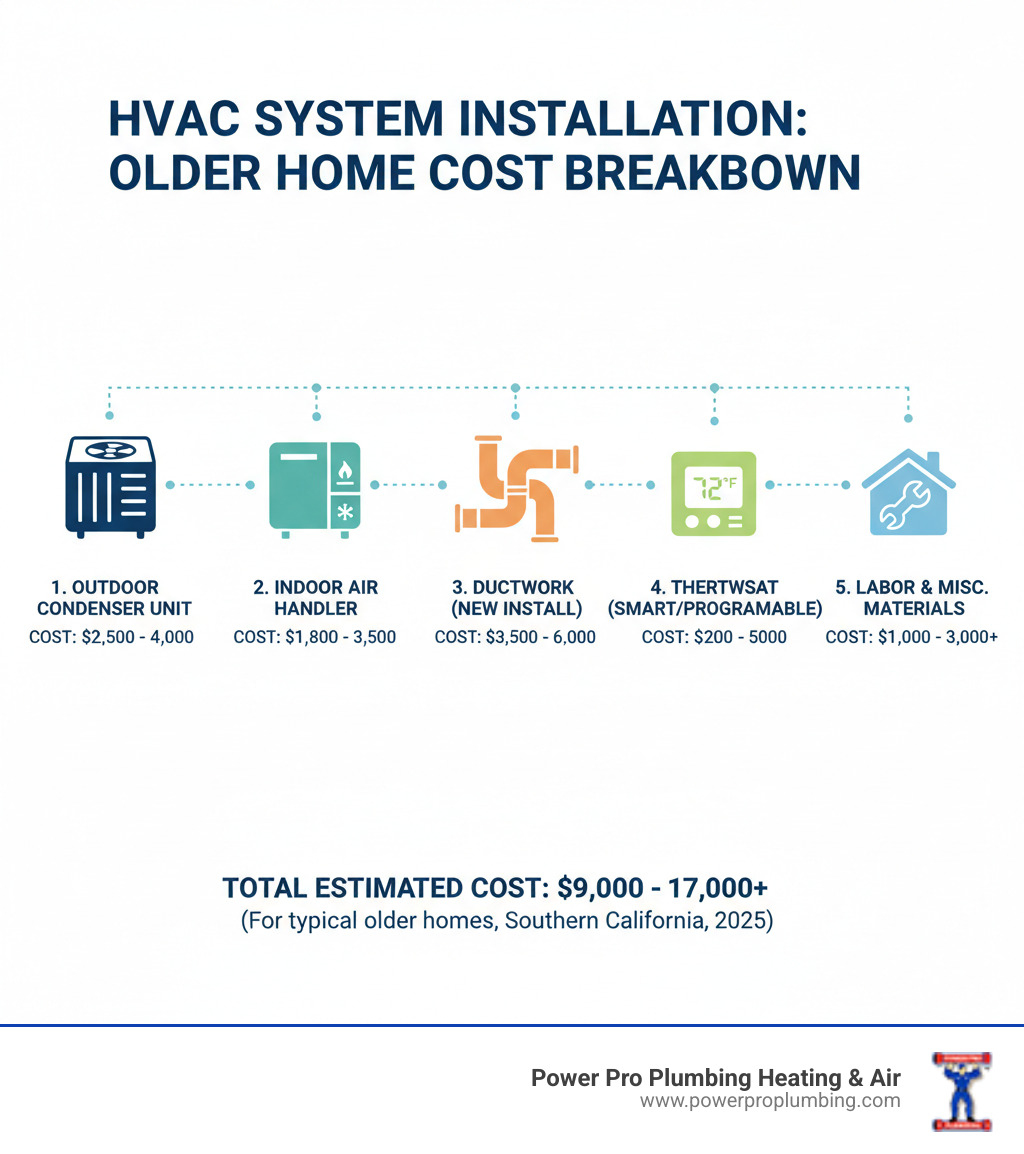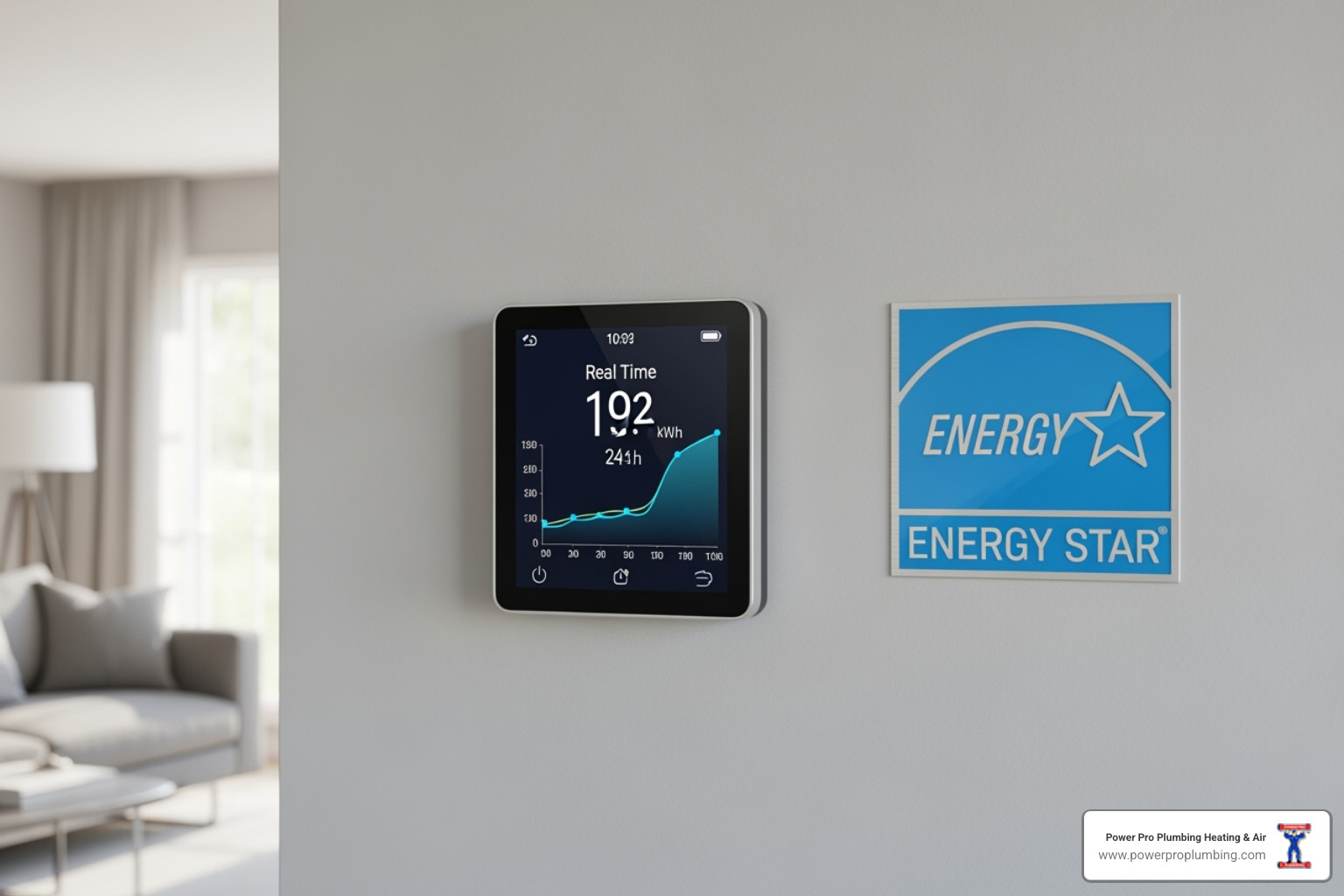
Understanding the Investment: What HVAC Costs Really Look Like
The cost to add hvac to house is a significant investment that varies widely for older homes in Southern California. The final price depends on your home's size, the type of system you choose, and whether you need new ductwork. Here's what influences the investment:
- Home size and layout - Larger homes require more powerful systems.
- Ductwork needs - Installing new ducts is a major factor in the overall project scope.
- System type - Central air, ductless mini-splits, and heat pumps each have different investment levels.
- Energy efficiency - Higher SEER ratings have a greater upfront investment but can save money long-term.
- Existing infrastructure - Older homes may need electrical upgrades or structural modifications.
If you own an older home in Los Angeles without central heating and cooling, you know the struggle of unbearable summer afternoons and chilly winter mornings. Many homeowners in Southern California face this exact challenge—their charming older homes simply weren't built with modern HVAC systems in mind.
Adding HVAC to an older house is more than just installing equipment. It involves understanding your home's unique construction, navigating potential challenges, and choosing a system that balances investment with long-term comfort and energy savings. With proper planning and professional guidance, changing your older home into a comfortable space is entirely achievable.
Looking for comprehensive HVAC services? Check out our HVAC solutions in Los Angeles or schedule a professional consultation to get a customized estimate for your home.
I'm Daniel Rodriguez, a second-generation tradesman with C36 and C20 licenses. I've helped countless Southern California homeowners steer the process of adding HVAC to older properties, where retrofitting presents unique challenges. Understanding these factors upfront helps you make informed decisions that protect both your investment and your family's comfort.

Key Factors That Determine the Cost to Add HVAC to a House
When determining the cost to add hvac to house—especially an older one—it's crucial to understand that no two projects are alike. Your home's unique characteristics will shape both the approach and the final investment.
Your home's size and layout are foundational. A larger, more complex layout requires a more powerful system to ensure comfort, which naturally affects the project's scope. Similarly, the age and construction of your home play a significant role. Older homes in Los Angeles often have less effective insulation and single-pane windows, which may necessitate a more robust system to achieve the desired comfort level compared to a modern home of the same size.
Your HVAC system must also be suited to the Los Angeles climate, handling both scorching summer days and chilly winter mornings. High-efficiency central systems or versatile heat pumps are popular choices for our moderate Southern California weather.
System size and capacity, measured in BTUs (British Thermal Units) and tonnage, are critical. A professional installer uses a Manual J: Residential Load Calculation to determine the exact size needed. This detailed analysis considers your home's layout, insulation, window exposure, and more to ensure the system isn't too small (ineffective) or too large (inefficient and prone to wear).
Understanding Your Home's Unique Needs
Before recommending a system, a thorough assessment is essential. We inspect key areas that impact HVAC performance and installation complexity. This includes evaluating the quality of your insulation, the integrity of window and door seals, and the condition of your attic and crawlspace, which are often used for routing ductwork. We also check your electrical panel capacity to ensure it can safely power a modern HVAC unit, as upgrades are sometimes necessary in older homes. Finally, we identify any potential structural modifications that might be required to accommodate the new system.
The Impact of Ductwork on the Cost to Add HVAC to a House
For central HVAC systems, ductwork is the delivery network for conditioned air. In older homes without existing ducts, installing a new system is a complex and labor-intensive process that significantly influences the overall cost to add hvac to house. It is often one of the most substantial parts of the project.
However, experienced technicians can minimize disruption. By creatively routing ducts through attics, crawlspaces, and closets, we can often avoid major demolition of walls and ceilings. Once installed, it's crucial that the ducts are properly sealed and insulated. Leaky ducts waste energy by heating or cooling unused spaces like your attic. Well-sealed ductwork can lead to significant savings on your energy bills, making it a worthwhile part of the investment that pays dividends for years.
Comparing HVAC System Types and Their Cost Implications
Choosing an HVAC system is like finding the right pair of shoeswhat works for your neighbor might not fit your home. Your older Los Angeles home has unique needs, so let's walk through the main system types.

Central Air Conditioning and Forced-Air Furnaces
When most people think of home comfort, they picture central HVAC. Used in a majority of American homes, these systems push conditioned air through a network of ducts to provide consistent, whole-home coverage. The main challenge in older homes is the potential need to install ductwork from scratch, which significantly impacts the cost to add hvac to house. If ducts already exist, adding central air is more straightforward. For heating, these systems are typically paired with a natural gas furnace for powerful, efficient heat or an electric furnace where gas is unavailable.
Ductless Mini-Split Systems
What if your home wasn't built for ductwork, or you only need to condition specific areas? Ductless mini-split systems are the perfect solution.
Ideal for additions, converted garages, or rooms that are hard to heat and cool, a mini-split consists of an outdoor unit connected to one or more indoor air handlers. Installation is minimally invasive, requiring only a small hole in the wall. This avoids the extensive renovation associated with adding ducts.
Mini-splits are highly flexible and energy-efficient. Each indoor unit operates independently, allowing you to create zones and avoid conditioning empty rooms. A single-zone setup provides both heating and cooling for one area, while multi-zone configurations allow independent control over several rooms, making them a cost-effective alternative to retrofitting ductwork in an older home.
Heat Pumps: An All-in-One Solution
Heat pumps are gaining popularity in Southern California because they deliver both heating and cooling in one highly efficient package. In summer, a heat pump functions like an air conditioner. In winter, it reverses the process, extracting heat from the outdoor air and moving it inside. This heat transfer process uses far less energy than traditional heating methods.
Air-source heat pumps, the most common type, are perfect for our moderate Los Angeles climate. Geothermal heat pumps, which transfer heat with the ground, offer even greater efficiency but require a larger initial investment. Heat pumps are well-suited to our climate, offer dual functionality, reduce your carbon footprint, and often qualify for government rebates.
The primary consideration is the upfront investment, which can be higher than for a standalone furnace or AC. However, for most Los Angeles homeowners, the combination of year-round comfort, energy savings, and environmental benefits makes a heat pump an excellent choice. For more information, you can consult resources like the U.S. Department of Energys guide to heat pumps or schedule a consultation with us for personalized recommendations.
The Role of Energy Efficiency in Your HVAC Investment
When considering the cost to add hvac to house, it's easy to focus on the sticker price. However, the cheapest system upfront can become the most expensive over time due to higher energy consumption. A higher initial investment in an energy-efficient system can lead to significant utility bill savings over its lifetime, not to mention the environmental benefits.

Modern HVAC systems use standard ratings to indicate their efficiency. For cooling, SEER (or the newer SEER2) ratings are key—the higher the number, the more efficient the unit. For heating, AFUE (Annual Fuel Utilization Efficiency) measures what percentage of fuel is converted into usable heat. For example, an 80% AFUE furnace loses 20% of its fuel as exhaust, while high-efficiency models can reach 95%-98% AFUE.
High-efficiency units also provide more consistent temperatures, run quieter, and offer better humidity control. Homeowners with ENERGY STAR-certified equipment often see substantial savings on their heating and cooling bills compared to older, standard models.
Understanding Efficiency Ratings and Rebates
For central air conditioners, we generally recommend looking at systems rated 16 SEER or higher. Ductless systems often have even higher ratings. These efficient models improve comfort through steadier temperatures and quieter operation.
High-efficiency systems may also qualify for rebates and incentives that reduce your out-of-pocket expense. ENERGY STAR certified equipment is often eligible for federal and state programs. The federal government offers tax credits like the Energy Efficiency Home Improvement Credit (up to $3,200 annually on qualifying equipment) and the Residential Clean Energy Credit (30% of the cost for systems like geothermal heat pumps). You can claim these using IRS Form 5695.
Incentives are increasingly focused on heat pumps due to their impressive efficiency. To find programs available in your area, the Database of State Incentives for Renewables and Efficiency is an excellent resource. Our team helps clients steer these programs to make high-efficiency systems an even smarter investment.
The True Cost to Add HVAC to a House: Upfront vs. Lifetime
When evaluating the cost to add hvac to house, it's wise to consider the lifetime expense, not just the upfront price. A high-efficiency system may have a higher initial investment, but it delivers long-term value.
These systems typically have longer lifespans (15-20 years with proper maintenance), come with better warranties, and use smarter technology to optimize performance. The cumulative energy savings over the system's life can often offset the higher initial purchase price, delivering a strong return on investment.
Beyond savings, a new, efficient HVAC system adds tangible value to your home, as it's a feature modern buyers seek. You'll also benefit from reduced repair costs, as new systems are far more reliable than aging ones. Many homeowners find the greatest benefit is an improved quality of life—consistent comfort, peace of mind, and a smaller environmental footprint.
Frequently Asked Questions about Adding HVAC
When homeowners in Los Angeles consider adding HVAC to their older homes, many of the same thoughtful questions arise. Here are answers to the most common concerns we encounter.
What is the expected lifespan of a new HVAC system?
A modern HVAC system is built to last. A central air conditioner or heat pump typically has a lifespan of 10 to 15 years, while furnaces can often last 15 to 20 years. These estimates assume the system was professionally installed, correctly sized, and regularly maintained. Annual maintenance is essential to maximize lifespan, ensure efficiency, and prevent unexpected breakdowns. When you invest in the cost to add hvac to house, regular maintenance protects that investment.
Are there additional costs for system add-ons?
Yes, beyond the core system, many clients choose add-ons to improve indoor air quality and comfort. While these affect the project budget, they deliver noticeable benefits.
- Whole-house humidifiers are popular in our dry climate to alleviate dry skin and protect wood furnishings. Different types are available, from budget-friendly models to more efficient steam units, with a corresponding range in investment.
- Whole-house dehumidifiers control excess moisture, preventing mold and improving comfort.
- Advanced air purifiers and filtration systems integrate with your HVAC system to remove allergens, dust, and pet dander. Options range from simple filter upgrades to sophisticated purification technologies.
- UV lamps can be installed within the ductwork to sterilize airborne pathogens.
- Smart thermostats are a very popular upgrade. They offer remote control via your phone and optimize energy usage automatically, often paying for themselves in energy savings over time.
Is it better to install a new HVAC system in a particular season?
Timing your installation can be advantageous. We've found that the off-season months—typically spring and fall—are often the best time. During these shoulder seasons, HVAC professionals have more scheduling flexibility, as we aren't handling a high volume of emergency calls. This can lead to a smoother, less stressful installation process.
Of course, if your system fails during a heatwave, an emergency replacement is necessary, and we're always ready to help. But if you can plan ahead, an off-season installation gives you more control and ensures your new system is ready before you need it most.
Get a Professional Assessment for Your Los Angeles Home
As we've seen, the cost to add hvac to house in Los Angeles isn't a one-size-fits-all figure. Your home's age, layout, insulation, and ductwork all play a role in the final investment. Retrofitting an older property brings a unique set of considerations compared to installing a system in a new home.
This is why a professional, in-home consultation is absolutely essential. An expert assessment can uncover unforeseen challenges or advantages that a simple estimate would miss. Every home is different, and trying to determine the scope of work without a detailed inspection is a recipe for surprises.
We see many homeowners attempt DIY installation to save money, but we strongly advise against it. Central HVAC systems involve complex electrical work, certified refrigerant handling, and precise calculations. A mistake can lead to inefficiency, safety hazards, voided warranties, or costly home damage. This is a major home system that requires licensed expertise.
Choosing the right contractor is critical. At Power Pro Plumbing Heating & Air, we've earned the trust of thousands of Los Angeles homeowners—our over 28,573 online reviews speak to our commitment to quality. As a Daikin Comfort Pro, we offer premium equipment with strong warranties, and our Power Pro Club ensures your system stays in peak condition.
Your older Los Angeles home deserves a modern comfort solution custom to its unique character. We'd love to help you find what that looks like.
Ready to take the next step? Schedule your professional AC installation in Los Angeles today. We'll assess your home and provide a clear, detailed plan to transform your uncomfortable rooms into spaces you'll love.


